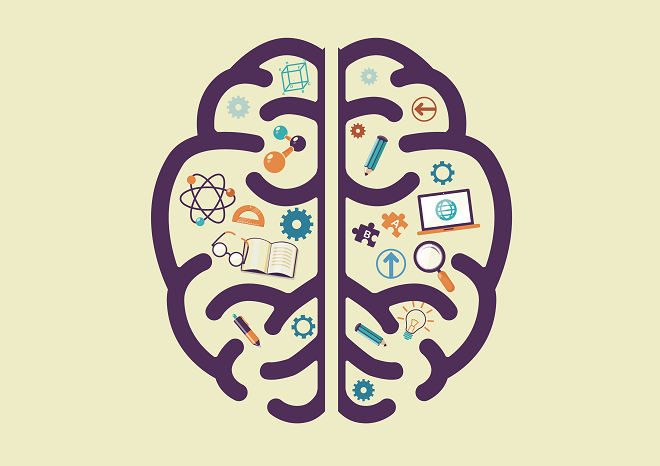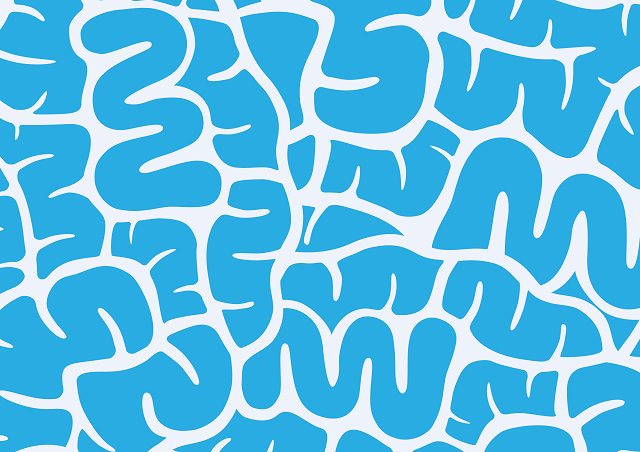When it comes right down to it, learning Japanese is pretty much a memory game.
Learning how to pronounce Japanese words is very easy, and understanding what the new words mean isn’t all that big a deal either. But can you recall them at a moment’s notice when you need to? Or do you go blank?
There are many people who study Japanese from books and courses who say that they can recognize and understand Japanese when they see it or when they hear it, but when it is time for them to create their own sentences in Japanese, they aren’t able to do it.
Can you relate to that feeling at all?
Would you like to know how to remember Japanese instead of only being able to recognize it?
I hope you do, because that’s exactly what I’ll be sharing with you in today’s post. The strategies discussed here will be within the application of learning Japanese, but the principles hold true for remembering any new information.
I’ll also explain the difference between recognition and recall at the end, and what you can do to get more of the latter.
The beginning of the memory process has to do with a little word called…
What is Encoding?
The main reason why people have a hard time remembering things is because they never fully learned them in the first place.
Often times when a person is studying, they are board, stressed out, or distracted by other things going on in their lives. All of these mental states take attention away from the study material, and people end up getting only a very weak impression of the new information.
That brings us to encoding, which is the first step in the process of creating a new memory. You brain takes in a perceived item through your senses and changes it into something that it can store away and recall at a later time.
Here’s the key: If you have a very strong encoding process when you first take in new Japanese words and phrases, then it becomes a lot easier to remember and recall that same information later on.
But how exactly do you go about it? I mean, it’s nice to talk about the whole process and to understand it, but you want to use it to get good results, right? That brings us to the next part…
How to Encode

Let’s take a look at the methods that promote a strong encoding process. By using any one of these four tactics, you will learn Japanese faster than normal since you won’t have to use as much repetition to lock it in. And if you can combine several of them together, it will accelerate the process even further!
1) FOCUS
There is a common misconception in our society that multitasking is a virtue. And while it may be nice to be able to drive a car, talk to a friend, and fix your hair in the mirror all at once, doing more than one thing at a time is hugely detrimental to you efforts when learning.
Attention is like a pie chart. You can divided it up among as many different things as you like, but each time you do, it takes away from something else. You only have 100% in total that you can spend.
Imagine that you’re in a race. What’s the difference between running at 50% of your abilities and running at 100%? The difference is everything! And it’s going to be pretty dang hard (or even impossible) to win a race when you’re going at it with only half of what you’ve got.
I’m not saying that you’re in a race against anyone else when it comes to learning Japanese, but I am saying that you can probably cut the time it takes to reach fluency in half by adopting this focus methodology.
Rather than dividing your attention between studying Japanese and something else (talking with a friend, watching TV, Facebook, etc.) the first way to attain stronger encoding is to have complete, 100% focus when you study Japanese. Eliminate all distractions and really hone in on the new material.
If you’re struggling with having this laser like focus at first, just gently remind yourself that the only thing you have to do right now is to study Japanese. Everything else can wait until you’re finished. If you keep at it like this each day, eventually it will get easier and become habitual for you.
2) RELAX
Did you know that you actually have three different brains? I won’t go fully into all of it here, but one of your brains is known as the “Reptilian Brain.” And it’s job is simple: keep you alive.
It’s always on the lookout for things that could go wrong, and when it feels threatened it puts you into the “fight or flight” mode. This is good when a Tiger is about to eat your face off and you need to get away! But when was the last time that actually happened to you?
For most people, things like getting a project at work completed on time or turning in your paper for English class are way more scary than a tiger. Unfortunately your reptilian brain can’t tell the difference between a tiger and a school test. All it understands is: when I feel stress = I am in danger.
So when you are feeling tense or stressed out in your life, your reptilian brain starts looking for ways to escape the situation.
It’s detrimental to learning Japanese.
The way to combat it, is simply to take some time (2 minutes tops is good) right before you begin to study and fully relax yourself. This can be done through a brief meditation, simple breathing exercises, relaxing music, or whatever else works best for you.
What is so important about being in a relaxed state of mind when learning? Simply put, being in a relaxed, but alert state of mind is the ideal state for learning. This is known as the Alpha Brainwave State.
People who join an accelerated learning class are typically put into this Alpha State of mind and are then able to learn 200 or more new words a day!
So take just a few minutes before each study session to calm down and relax before you begin learning.
This technique also ties in with the first one (FOCUS) since people who are stressed out are typically distracted by whatever their big stressor is.
3) 20-30 MINUTES
As it turns out, studying for 4 hours straight is actually a bad idea!
There are two things known as the Primacy Effect (P.E.) and the Recency Effect (R.E.) that basically say that you will tend to strongly remember the first things and the last things that you study during a session. That means that the stuff you learn in the middle of the session is the hardest to remember and recall.
Here is a basic graph that illustrates it. Don’t mind the German(?)
What the studies have found is that the maximum amount of time that you should spend learning something is 20-30 minutes.
Then you need to take a 5-10 minute break doing something completely different (drink some water, go to the bathroom, do some push-ups, etc.) in order to “reset” you brain so that you can reap the benefits of the P.E. and the R.E. again with a new study session.
So let’s say that you have about an hour to study Japanese. Instead of studying for an hour straight and only getting one P.E. and one R.E. you can:
- Study for 25 minutes
- Take a 5 minute break
- Study for 25 minutes
- Finish
When you study in this way, you get to the reap the benefits of the P.E. and the R.E twice!
Remember, the point of studying is to be productive (get results) not “to be busy.”
4) MULTI-SENSORY LEARNING
Did you know that you actually have separate memories for the things that you see, the things that you hear, and the things that you feel/do?
(You also have one for taste and one for smell, but I’m not really sure how to apply those two to learning Japanese!)
What this means is that the more senses that you can get involved while you are taking in new information, the better and easier it will be for you to remember it.
-If you only listen to Japanese = 1 sense: hearing
-If you listen to and repeat Japanese = 2 senses: hearing and feeling/doing
-If you read, listen to, and then repeat Japanese = 3 senses: seeing, hearing, and feeling/doing.
This is why programs like Rosetta Stone and Busuu incorporate pictures to illustrate new vocabulary. It’s so that you can hear and see the new information at the same time. But it is up to you to then repeat it out loud (weather prompted to, or not) and involve that final sense of feeling/doing in the process.
So try to think of ways that you can involve all of your senses when you study.
The really great language learning programs have it already figured out and require you to use them all to progress through the lessons. But if your study material doesn’t naturally involve them all (for example, learning from a book) then it’s up to you to fill in the gaps.
All of this is really just another way of saying that “full participation accelerates learning.”
A final word about these encoding methods.
In case you were wondering, the answer is no: these four methods are not the only ways that you can improve encoding. But I just wanted to keep it simple in this post so that you can:
- Learn them, and then:
- Do them.
The things I’m talking about here aren’t anything new or earth shattering. They are just simple distinctions that make a big difference in results when practiced consistently over time.
The Difference Between Recognition and Recall

Memory is a mysterious thing. I’ve been told that you never truly forget anything, it’s just that your recall isn’t always able to go and get the information you want.
Recognition is fine for most areas of your life. You see a red light at the intersection and you remember that you need to stop. Or you hear a certain sound at night and then you remember that it’s the Cry of a Fox.
Recognition is when information is outside of yourself, it goes into your brain, and you then identify what it is.
Unfortunately that just doesn’t cut it when it comes to languages. With recognition you will only be able to watch Japanese anime and read Japanese manga, but you won’t be able to have an actual conversation with anyone. To produce Japanese, you will have to have recall too.
Recall then, is the ability to take information that is inside of yourself (somewhere) and to then convert it into a form (written or spoken) that can be shared with others.
You can think of the differences between recognition and recall by how you would answer these two types of questions on a school test:
-Recognition is used when answering a “multiple choice” question on a test.
-Recall is used when answering a “fill in the blank” question on a test.
So here’s the question: how do you improve recall instead of just improving recognition? The simple answer is to practice recalling things.
If your study method only involves recognition (like selecting the correct answer), then you’d better be practicing some recall on your own. This could be by speaking Japanese out loud and having conversations with yourself (you’re not crazy!), or it could just be typing out some sentences in kanji and kana and then verifying that it’s correct.
RELATED: Learn How to Get Feedback (FREE) From Natives on Your Japanese.
Any course or teacher that forces you to speak out loud and produce Japanese words and phrases, is doing you a huge favor. It can be hard to struggle through it at first, but thankfully it gets easier the more you do it.
And there you go! You now know four different ways that you can use to improve encoding while leaning Japanese. And you also can tell the difference between recognition and recall.
- FOCUS
- RELAX
- 20-30 MINUTES
- MULTI-SENSORY LEARNING
- Recognition ≠ Recall
あなたは天才ですよ!
I want to hear from you now! Know of any other ways to improve memory? What methods have worked well for you? Let me know with a comment below!
Further Resources for Learning Japanese:
#3 Get My eBook (Secrets to Learning Japanese) for Free

またね!


I can definitely relate to the illusive nature of recall. I have been studying Japanese on and off for about 3 years now and I usually have some amount of recognition but to respond…. **scream**
The first time I really noticed this was when I checked out Gabriel Wyners’ learning method in his book Fluent Forever. Do you know it? What are your thoughts?
Hey Michelle, I can absolutely relate to you on that, as can most people I would think. As for my thought’s on Gabe’s book: I love it! I even did a review on it that you can find here:
Fluent Forever Review
He really does an amazing job on how Spaced Repetition works to help lock in new material. And also the different ways that you can apply it to your language learning. I also resonate with him on his philosophies about learning the sounds of a language as a first step. I did a lot of opera in college myself, so I feel where he’s coming from.
Hello, I accidentally landed on your site expecting to learn some Japanese phrases and instead I got a good lesson on learning. This is very useful for learning languages and for other things too, especially helpful to students looking to memorizing things, so thank you!
You’re very welcome! I take a little time out every now and then to shift the focus from “Japanese” to “Accelerate Learning.” I did write a couple of posts on Japanese phrases a little while ago. You can find them here:
1) Japanese Phrases, Idioms, and Expressions.
2) Use Japanese Conversation Phrases to Learn
Now that you know all about encoding, you can apply that new knowledge to learning the phrases in these other two posts! (^_^)b
I think I’m going to put these techniques into my repertoire for good. And thank god I now have solid proof that 4 hours of studying isn’t good for me! lol. Great interesting post, man. Thank you.
Hey Eric, my pleasure man! I was also super relieved when I learned about the Primacy Effect and the Recency Effect. I think there is this idea that you “have” to spend endless hours studying Japanese every day in order to become fluent.
But as time goes on and we learn more about optimum learning methods for the human brain, a lot of those old ideas are getting busted! But most of the research never reaches the general populace. It’s unfortunate, but that’s one of the reasons that I talk about them here on Japanese Tactics.
Glad I could help!